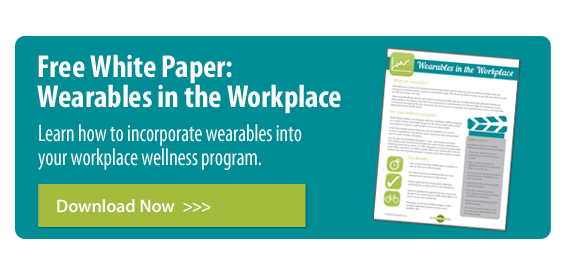 Millennials are slowly but surely infiltrating your workforce with degrees and experience under their belts. Boomers might also be a bit slow to retire, so they’re still doing great work for you too. If the two end caps are now working for your company that means Generation X from the middle ground is probably prominent as well.
Millennials are slowly but surely infiltrating your workforce with degrees and experience under their belts. Boomers might also be a bit slow to retire, so they’re still doing great work for you too. If the two end caps are now working for your company that means Generation X from the middle ground is probably prominent as well.
It might seem like something weird to have to consider. But, depending on your company, you might be working with one, two or all of these generations. Different generations are motivated by different things. When it comes to designing and promoting your wellness program, this can definitely be a bit of a challenge.
BoomersThis generation was born in the baby boom after World War II. They generally work towards one common goal. This means they like to advance up a hierarchy at a single company to gain leadership experience. Boomers really value job security when it comes to their careers, and they tend to stay at one job for a very long time.
In Wellness
These traits make boomers an interesting population to sell your wellness program too. Because they tend to be loyal to a company, it’s important to have leadership involved in your program. It might also be helpful to focus on one common company goal for wellness, rather than individual goals.
Similarly, boomers might be more apt to participate in an all-or-none program, rather than a points-based program. Even if the “all” is bigger than some of the activities that warrant points, the concept might better appeal to their desire for a single goal. If a point system just works better for your company, consider organizing the points in a hierarchy, so boomers can work their way up to becoming wellness champions.
Generation X
These are usually thought to be the people born from about 1965-1980. They tend to multi-task, and have a lot going on at once. Unlike the Boomers, they usually spend a shorter time at each individual job, averaging about 3-5 years in one place.
Generation X usually consists of competent people who are skilled technically. They also tend to be very independent and learn as they go, rather than relying on a lot of instruction. This generation is also one that puts a lot of value in family and work/life balance.
In Wellness
There are lot of things you can do in your wellness program to appeal to Generation X. First, start with activities that they can do on their own time to exercise their independence. Give them the tools, but really let them run with it. You might also want to consider communicating about wellness as a “life” thing rather than a “work” thing to help them see how work/life balance can be sought through the program.
Another great option for Generation X might be a wellness portal. With the technical know-how this bunch has, it wouldn’t take much to learn the platform. It’s also another avenue to allow them to manage their wellness independently and on their own time.
Millennials
These young professionals were born between 1980 and the new millennium (hence the name). They want meaningful and challenging work. Because of this, they tend to be more loyal to the work than to the employer and can bounce from job to job a bit more frequently.
This generation is one that grew up surrounded by technology. Because of this, they have incredible amounts of information at their fingertips (thanks, Google!), and they know how to use it. This digital transition has also pretty much squashed work/life balance. Millennials are always plugged in. They want work and they want life, and they expect the two to mesh.
In Wellness
Some millennials have come to expect things like wellness programs from their employers. This means it could be a major recruitment tactic if you’re seeking some younger employees. Because they like meaningful work, they like to know that their employers are invested in them as much as they are in the work. Use messaging that shows your investment in them as a whole.
Millennials are just about opposite of Boomers when it comes to incentive programs. They enjoy challenges, so the short-term goals of a points system might be something they can relate to. There are lot of wellness portal features that help to take this gamification on-the-go. Look into how that might work with your Millennials.
It all comes down to this:
Before you put a lot of effort into promoting your employee wellness program, take a look at your workforce. Design the details to appeal to your employees. Odds are you don’t have just one generation or another. Play around with combinations of tactics to really strike a balance and make the most of your wellness program promotion. The generation gap can be a challenge, but don’t let it be a road block.
How does your company address the generation gap in wellness?



